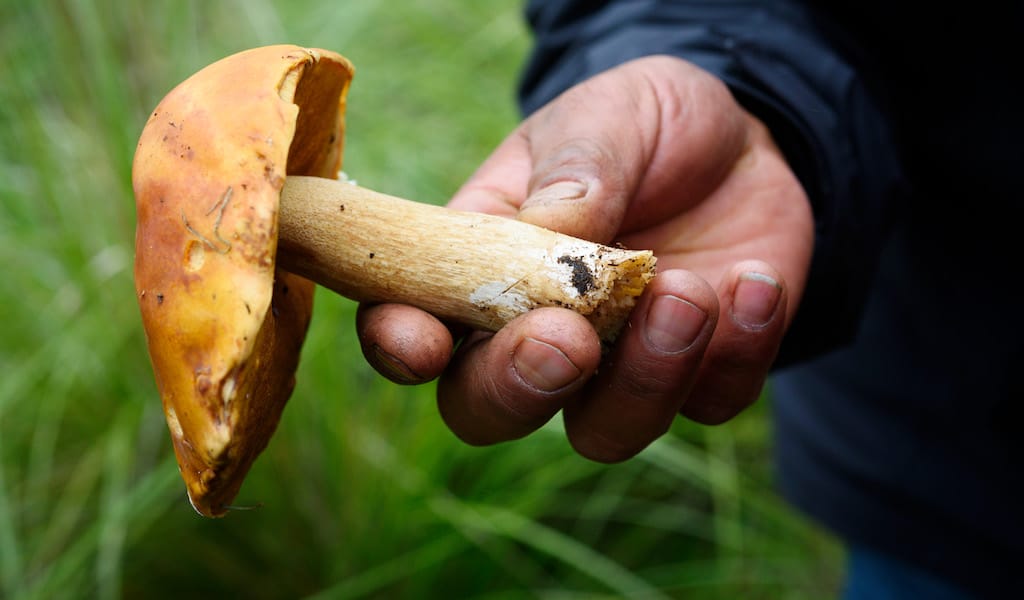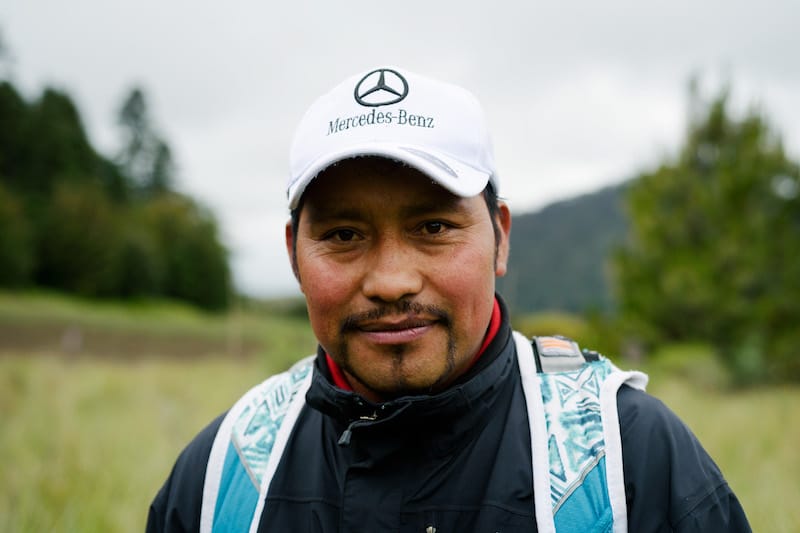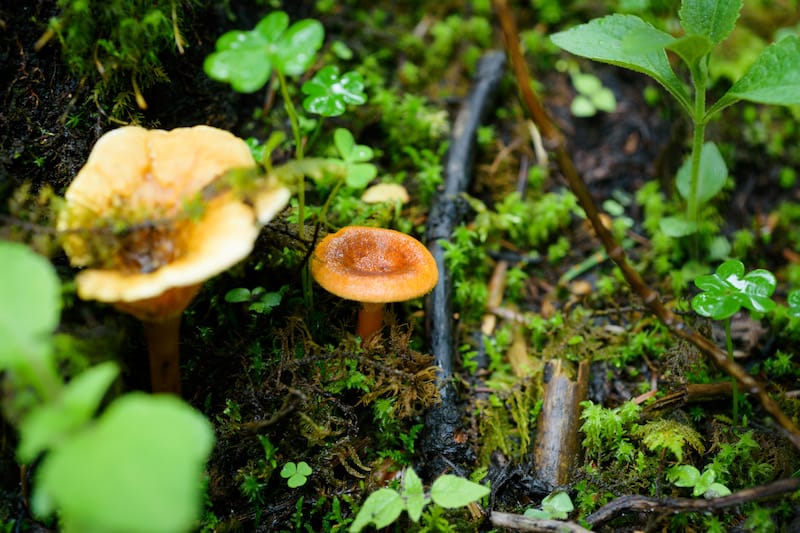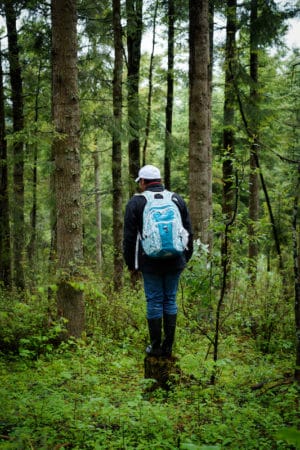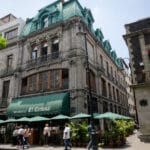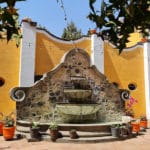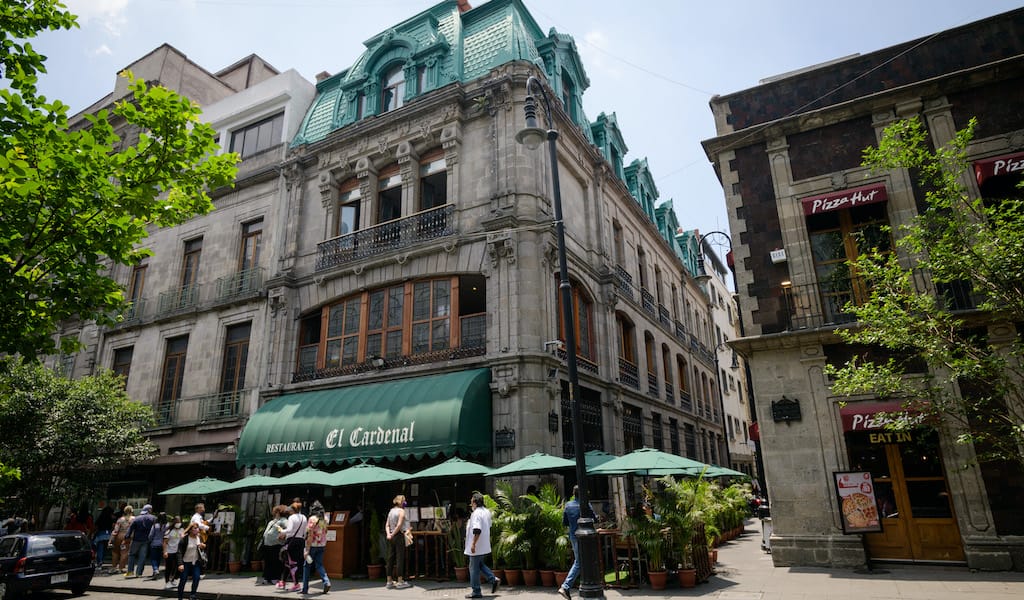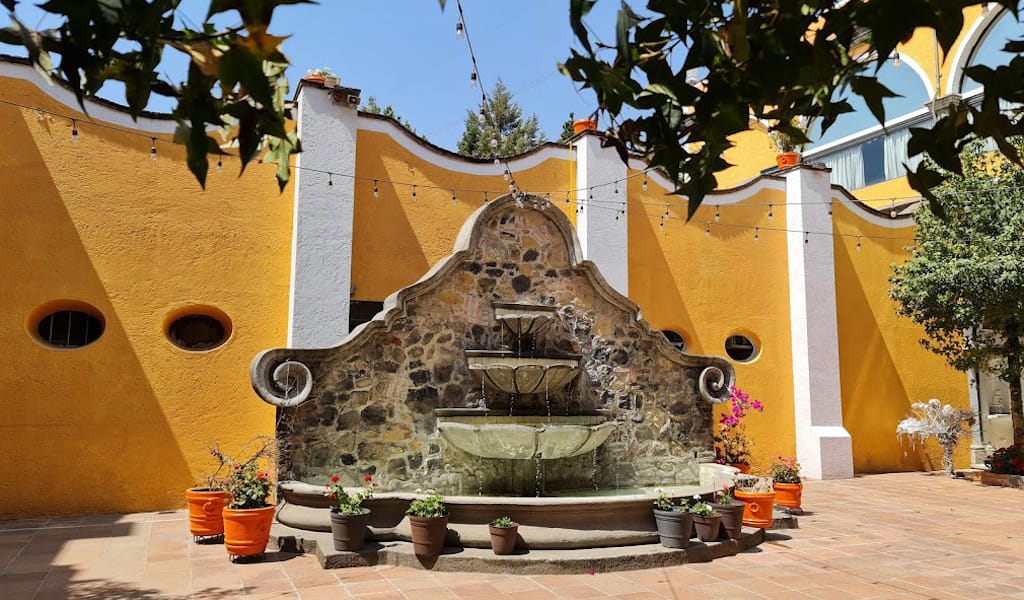When Andres Contreras brings wild hongos (mushrooms) down from the forest, everyone starts preparing for a feast. “I learned everything from my dad. The categories of mushrooms, which were edible, everything,” says Andres on the day we trekked through those same woods he walked as a child, discovering the secrets of hunting for fungi. He makes quick work of the kilometers to the top of the section we are walking, with a hawk-like accuracy for spotting mushrooms and a soft gait despite his chunky rain boots.
The area, about an hour outside of Mexico City in Mexico State, has been home to mushroom hunters for over a hundred years and is a parcel jointly owned by several communities in a cooperative structure known as an ejido. While most of the land is used to farm, this section of pine forest we are in, called La Mesita, has been set aside as a natural area used for the more innocuous activities of foraging and animal grazing, as well as destructive ones like logging.
“My mom was 12 or 15 when she would go hunting with her aunts, uncles and parents and some cousins,” Andres says. He was about eight himself when he started on the hunt. Along with his father and brothers, he took care of the family’s sheep herd that grazed the pine forest outside of his village. They had a small cabin up the mountain where they would often stay on the nights they took the animals to graze. This is where his first fungi lessons began.
Now, his mushroom hauls are call for some tasty dishes: “It all depends on what we bring,” he says. He recounts a long list of shrooms and their complementary ingredients. The chapopote (Helvella lacunose) is cooked with green chile salsa and pork ribs. Porcinis become a stew, with onion and chiles, “that is so good,” he says. For soup, they are coarsely chopped to retain flavor, and cooked in a little water, epazote (wormseed or Mexican tea), garlic and onion. Some add chile and popoche, a small dried fish commonly sold in the market. “They put that in and …. whewooooo,” Andres whistles in satisfaction – the passing years have not dampened his appreciation for these delicious forest-floor fruits. The caps of the chilero (Lactarius deliciosus), however, are sautéed on their own. “They put them on the comal [griddle] without any oil or anything,” Andres says, “just cooking in their own juice.” Thinly sliced onion and chiles are later added, and “they turn them over and over,” before serving it all on fried tortillas.
As wild hongos have developed into a food trend, they have become even more valuable to the locals that collect and sell them in Mexico City in Mercado Jamaica, Mercado San Juan and Mercado Sonora. These days, there a few more mushrooms hunters on the prowl than when Andres – and his mom – were kids. “Now my mom is 82, so that’s a lot of time,” he says. “The clavo [Lyophyllum descastes] right now is between 290 and 300 pesos [around $15] a kilo,” Andres informs us, along with the prices of other favorites: Chilero sell for 120 a kilo, porcini about 170-200 pesos a kilo and the ultra-trendy morels go for 300 pesos a kilo. A well-trained hunter on a good day at the height of the season can come down with 10 or 12 kilos of mushrooms, so it’s a pretty nice extra chunk of change. Extra, because most of the locals have other jobs, and many are still farming the area’s traditional crops: potatoes, fava beans, corn and peas.
Although Andres sees more – and less considerate – mushroom hunters now traipsing through the area, the forest remains healthy, he says. Locals came together recently to protest against the logging and were able to get the companies to agree to stop. A plant nursery is being developed on the other side of the mountain that is growing trees endemic to the area. And residents come up into the forest to clear dead wood (which they use for firewood) as a way to keep the forest fires, a yearly occurrence, at bay.
Andres makes quick work of the kilometers to the top of the section we are walking, with a hawk-like accuracy for spotting mushrooms and a soft gait despite his chunky rain boots.
Andres now takes his 16-year-old son, Marco Antonio and his two young daughters along, passing along the tradition he has learned through his lifetime on the hunt. He’s also leading tours with Nanae Watabe, a local mushroom expert who sells to some of the city’s biggest restaurants. He’s met famous Mexico City chefs like Eduardo Garcia and visitors from as far away as Korea and Spain. The day we tour with him, he has several dozen tourists pinging him with questions at a steady clip. It’s a constant refrain of the most insistent question of all – “Can I eat this?” – but he remains patient and focused on the ground.
For Andres, chilero mushrooms are his favorite to hunt because of their bright, burnt orange color, which sticks out on the forest floor. He is quick to add that his favorites for eating, though, include morels and porcinis. On this walk in early July, there is still some time to wait for the bulk of the mushrooms to poke their head up out of the ground. The start of August is when the real harvest can begin, he says. And with the harvest comes the feast. Our mouths are already watering.
Published on July 27, 2021







































